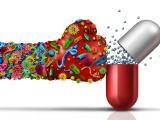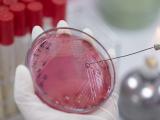A new report from the US Food and Drug Administration (FDA) lays out the progress that's been made in facilitating the development of new antibacterial drugs, but it says additional efforts are needed.
In a report to Congress, the FDA said that from the passage of the Generating New Antibiotic Incentives Now (GAIN) Act in July 2012 through September 2017, the agency granted 147 qualified infectious disease product (QIDP) designations, including 74 designations for novel drugs. Twelve of those products were approved by the FDA and are now on the market.
The GAIN Act, passed as part of the Food and Drug Safety and Innovation Act (FDASIA), aimed to address some of the economic challenges of new antibacterial drug development through the QIDP designation, which provides drug sponsors with an expedited review process and an additional 5 years of market exclusivity for products that treat serious and life-threatening infections.
The FDA said, however, that it remains too early to assess whether GAIN is truly addressing the need for new antibacterial and antifungal drugs, particularly products with novel mechanisms of action. While many QIDP designations shows that pharmaceutical companies are using the program, it will be several years before officials can determine whether the products that have benefitted from the GAIN Act are addressing unmet medical needs.
"Despite these accomplishments, significant scientific and economic challenges remain because of the nature of serious acute bacterial infections," the report said. "Efforts beyond GAIN are needed to build an antibacterial research and development enterprise capable of bringing new drugs to the patients who need them."
Too few novel products
An analysis of the QIDP designations shows that the five most common indications for which new products received the designation are acute bacterial skin and skin structure infection (ABSSSI), complicated urinary tract infection (cUTI), community-acquired bacterial pneumonia (CABP), hospital and/or ventilator-associated bacterial pneumonia (HABP/VABP), and complicated intra-abdominal infection (cIAI). Of the 12 drugs that were approved, 6 were for ABSSSIs and 3 were for cUTIs.
Among the new drugs approved by the FDA is Vabomere, which contains the antibiotic meropenem and the novel beta-lactamase inhibitor vaborbactam. The drug was approved for the treatment of cUTI caused by carbapenem-resistant Enterobacteriacea (CRE), which have been classified by World Health Organization as a "priority pathogen."
Of the 147 products that received QIDP designation, 73 are already approved drugs being developed with modifications, such as a new dosage form or indication, and 74 are novel products. None of the 12 antimicrobials approved by the FDA since 2012 are novel products. The agency said that it considers the number of novel drugs a better indicator of the new antibiotic pipeline than the absolute number of QIDP designations.
"While improvements to existing drugs may provide some benefit to patients, the development of innovative, novel drugs is essential to addressing the antimicrobial resistance crisis and ensuring that safe and effective options are available to treat current and future patients," the report said.
The FDA said it will continue to explore all aspects of GAIN incentives to see if specific changes should be made, and encouraged continued efforts by the Biomedical Advanced Research and Development Authority (BARDA), the National Institute of Allergies and Infectious Diseases (NIAID), and the Combating Antibiotic Resistant Bacteria Biopharmaceutical Accelerator (CARB-X) to spur development of new antibiotics, vaccines, and diagnostics.
Guidance and stewardship
The FDA also reported that it has reviewed and revised at least three guidance documents per year on new antibacterial development and QIDP designation. These documents, which incorporate input from numerous stakeholders and represent the FDA's current thinking on a topic, aim to assist companies involved in drug development. The FDA said the updated guidances "have positively contributed to the development and review of new antibacterial drugs."
The agency's efforts on guidance have been criticized, however. A Government Accountability Office (GAO) report in March found that half of the agency's updated or new guidance documents for new antibacterial products and QIDP designation are in draft form and may not necessarily reflect recent scientific developments or the FDA's current thinking. The GAO report argued that the lack of clarity in these documents is creating uncertainty for drug sponsors.
The FDA reported that its efforts to implement the GAIN Act have also included engagement with the broader scientific and policy community on antibacterial drug development. The report lists 11 workshops and advisory committee meetings held from 2012 to 2017 to discuss drug development, clinical trial design, and other topics.
The new report, which was officially released by the Department of Health and Human Services, which oversees the FDA, also includes a section on efforts by the Centers for Disease Control and Prevention (CDC, another HHS agency) to promote antimicrobial stewardship. Among the programs touted are the antibiotic stewardship "core elements" documents that the CDC has produced; these publications provide recommendations for stewardship in multiple healthcare settings.
The report also highlighted the CDC's efforts to measure antibiotic use and track healthcare-associated infections.
See also:
Feb 2 FDA GAIN report
























